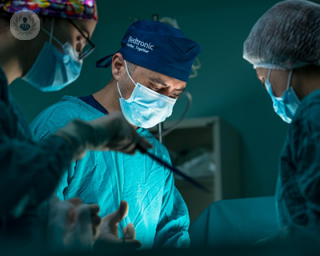Abdominal wall reconstruction
What is abdominal wall reconstruction surgery?
The abdominal wall is the three layers of muscle that protect and hold the inner organs. Sometimes, the strength and thickness of these muscles can become weak and unstable, due to a number of reasons, including:
- Recurring hernias
- Open, non-healing wounds
The aim of abdominal wall reconstruction surgery is to redistribute more evenly, and hence strengthen the abdominal muscles across the abdomen, giving the patient more comfort and an improved look to the abdomen as well.

Why would you do it?
This treatment option is often a final option, when other procedures have been unsuccessful. The main objective of this surgery is to restore strength and stability of the abdominal wall, giving it the ability to tolerate physical activity.
Most frequently, this surgery is required to fix recurring abdominal hernias. Generally, an abdominal hernia happens when the abdominal muscles become too weak, and as a result, the muscles split apart. This can result in fatty tissue and some of the bowel to protrude onto these muscles, causing swelling.
The types of abdominal hernia that can cause this are:
- Often developing near an old scar, fatty tissue and a section of bowel protrude through the weakened muscles after surgery.
- Part of the bowel or protrudes through the umbilical opening in the abdominal muscles.
- Although this type of hernia generally occurs in babies and infants, adults can be affected too, particularly in women after pregnancy.
What does this surgery involve?
During surgery, an incision into the abdomen is made and the layers of muscle are moved and redistributed. This allows the abdominal wall to closely return to its natural configuration.
Often in abdominal wall reconstruction surgery, a bioprosthetic mesh is used to reinforce the new positioning of the abdominal muscles. This mesh is made out of animal tissue allowing it to eventually be incorporated into the body. Using animal tissue has a lower risk of infection than if synthetic materials were used instead.
How to prepare for it
Like any other surgical procedure, before this treatment is recommended, a thorough examination will be conducted, with any relevant tests being carried out too. In addition, it may be necessary to cease eating and drinking the day of surgery.
Post-operative care
Those undergoing abdominal wall reconstructive surgery generally have to stay in hospital for up to five days following the procedure, or at least until bowel functions return to normal. You will also have drains attached to the site of surgery, to allow any fluids produced to be released. It may also be necessary to wear an abdominal binder after surgery for up to a month whilst the body heals.

















